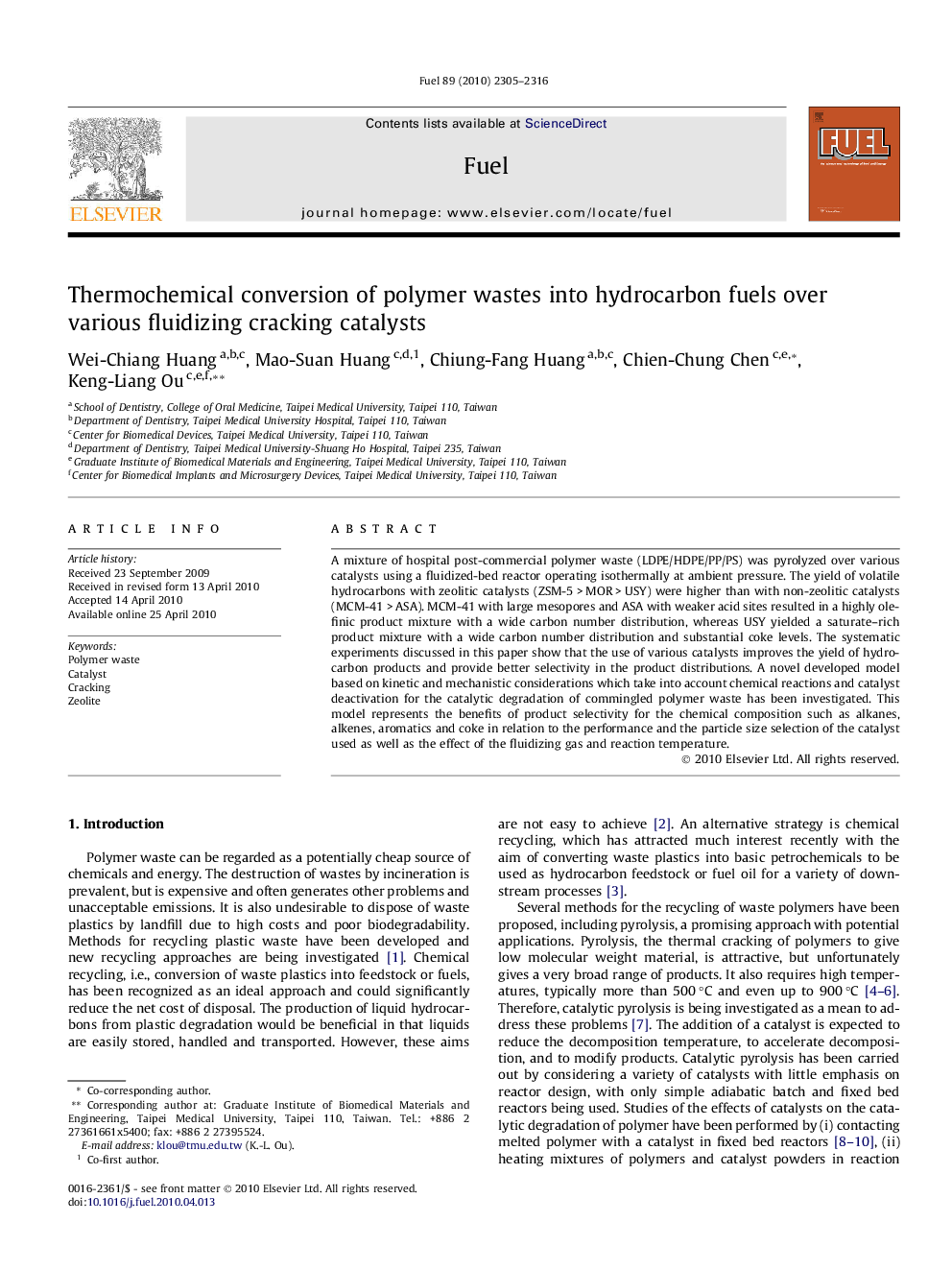| Article ID | Journal | Published Year | Pages | File Type |
|---|---|---|---|---|
| 207059 | Fuel | 2010 | 12 Pages |
A mixture of hospital post-commercial polymer waste (LDPE/HDPE/PP/PS) was pyrolyzed over various catalysts using a fluidized-bed reactor operating isothermally at ambient pressure. The yield of volatile hydrocarbons with zeolitic catalysts (ZSM-5 > MOR > USY) were higher than with non-zeolitic catalysts (MCM-41 > ASA). MCM-41 with large mesopores and ASA with weaker acid sites resulted in a highly olefinic product mixture with a wide carbon number distribution, whereas USY yielded a saturate–rich product mixture with a wide carbon number distribution and substantial coke levels. The systematic experiments discussed in this paper show that the use of various catalysts improves the yield of hydrocarbon products and provide better selectivity in the product distributions. A novel developed model based on kinetic and mechanistic considerations which take into account chemical reactions and catalyst deactivation for the catalytic degradation of commingled polymer waste has been investigated. This model represents the benefits of product selectivity for the chemical composition such as alkanes, alkenes, aromatics and coke in relation to the performance and the particle size selection of the catalyst used as well as the effect of the fluidizing gas and reaction temperature.
